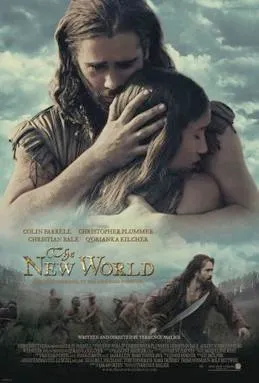Historical accuracy of The New World

Historical accuracy of The New World

Characters
Captain John Smith
Based on the real John Smith. Farrell portrays his adventurous spirit and leadership role. However, the central romantic relationship with Pocahontas is highly disputed by historians and likely fictionalized or exaggerated.
Pocahontas (Matoaka)
Based on the real Pocahontas (whose actual name was Matoaka). Kilcher's portrayal captures her youth (cast at 14, close to Pocahontas's age at the time) and role as an intermediary. The romantic focus and specific interactions are debated/fictionalized.
Captain Christopher Newport
Based on the real Captain Newport who commanded the ships that brought the settlers to Jamestown in 1607 and made subsequent voyages. Plummer portrays his leadership role accurately.
John Rolfe
Based on the real John Rolfe who married Pocahontas. Bale portrays him as a more reserved figure compared to Smith. Their marriage and trip to England are historical facts.
Powhatan (Wahunsenacawh)
Based on the real paramount chief of the Powhatan Confederacy. Schellenberg portrays him as a powerful, wary leader interacting with the English settlers, reflecting his historical position.
Edward Maria Wingfield
Based on the real Wingfield, the colony's initial leader who was later deposed (partly due to Smith's actions), reflecting historical conflict within the settlement's leadership.
More characters
Captain Samuel Argall
Based on the real Captain Argall, known for exploring the region and later for capturing Pocahontas in 1613 (an event depicted though context might differ slightly).
Opechancanough
Based on the real Opechancanough, a significant Powhatan leader who was initially involved in Smith's capture and later led major uprisings against the English (beyond the film's scope). Played by Wes Studi.
Story
English arrival and founding of Jamestown (1607)
The film accurately depicts the arrival of the three ships (Susan Constant, Godspeed, Discovery) and the establishment of the Jamestown settlement by the Virginia Company.
Smith initially imprisoned for mutiny
John Smith was indeed accused of plotting mutiny during the voyage and was imprisoned, only being released upon arrival due to orders from the Virginia Company naming him to the council.
Early interactions with Powhatan people
Portrays the initial mix of curiosity, trade, tension, and misunderstanding between the settlers and the local Powhatan tribes, reflecting historical accounts of early contact.
Smith captured by Opechancanough/Powhatan
John Smith was captured by Powhatan warriors while exploring the Chickahominy River in December 1607.
Pocahontas "saves" Smith from execution
The film depicts the famous scene based on Smith's own account. Many historians doubt the literal truth of this event, suggesting it might have been a misunderstanding of an adoption ritual or an embellishment by Smith.
Romantic relationship between Smith and Pocahontas
This central element of the film is widely considered historically inaccurate. Pocahontas was a child (likely 10-12) when she knew Smith (around 27). Their relationship was likely one of curiosity and diplomacy, not romance.
The "Starving Time" (Winter 1609-10)
The film visually suggests the severe hardship, starvation, and death that plagued Jamestown during this period, although it occurs slightly earlier contextually in the film (around Smith's leadership 1608-09) than the main event.
Smith's departure from Jamestown
The film shows Smith leaving under orders from the King. Historically, Smith left Jamestown in 1609 due to a severe gunpowder injury (an explosion) and returned to England.
Pocahontas believing Smith is dead
Pocahontas was likely told Smith had died after his 1609 departure, influencing her later interactions with the English and her reaction upon meeting him again in England.
Pocahontas captured by Captain Argall (1613)
Pocahontas was captured by the English under Captain Samuel Argall and held as a high-value hostage in or near Jamestown.
Pocahontas's conversion and marriage to John Rolfe
During her captivity, Pocahontas converted to Christianity (taking the name Rebecca) and married the tobacco planter John Rolfe in 1614, which brought a period of peace.
Pocahontas (Rebecca Rolfe) travels to England
Pocahontas, John Rolfe, and their son Thomas traveled to England in 1616 as part of a publicity effort by the Virginia Company.
Pocahontas meets English royalty
Pocahontas was presented at the court of King James I and Queen Anne, where she was treated as visiting royalty.
Pocahontas meets Smith again in England
Pocahontas and John Smith did have a reunion in England before her death. Accounts suggest it was somewhat formal and possibly strained, differing from the film's more emotionally charged depiction.
Pocahontas's death in England (1617)
Pocahontas became ill and died in Gravesend, England, as she was preparing to return to Virginia. She was likely around 21 years old.
Setting
Early 17th Century Virginia landscape
Filmed largely on location in Virginia near the actual Jamestown sites, capturing the forests, rivers, and coastal environment encountered by the settlers with praised naturalism.
Powhatan villages (Werowocomoco)
Extensive research informed the reconstruction of Powhatan dwellings (longhouses called yehakin), village layout, and daily life, aiming for high authenticity.
Jamestown fort construction/layout
The film accurately portrays the triangular James Fort based on archaeological findings, showing its construction stages and the harsh, rudimentary conditions within.
Powhatan culture, attire, customs
Malick made significant efforts to portray Powhatan culture authentically, including body paint, hairstyles, clothing (or lack thereof), ceremonies, and social structures, advised by historians and linguists.
Use of reconstructed Algonquian language
Linguist Blair Rudes was hired to reconstruct the Virginia Algonquian (Powhatan) language, which is spoken extensively by the Native American actors in the film, adding significant authenticity.
English ships (Discovery, Godspeed, Susan Constant)
Replicas of the original ships were used, providing accurate visual representations of the vessels that brought the settlers to Virginia.
Early 17th Century English attire/court
Costumes for the English settlers and later scenes at the English court accurately reflect the styles (Jacobean era) of the early 1600s. Pocahontas's English attire is based on her portrait.
Hardships of early colonial life
Effectively conveys the disease, starvation ("Starving Time"), internal conflict, and difficult relations with Native Americans that characterized the early years of the Jamestown settlement.
